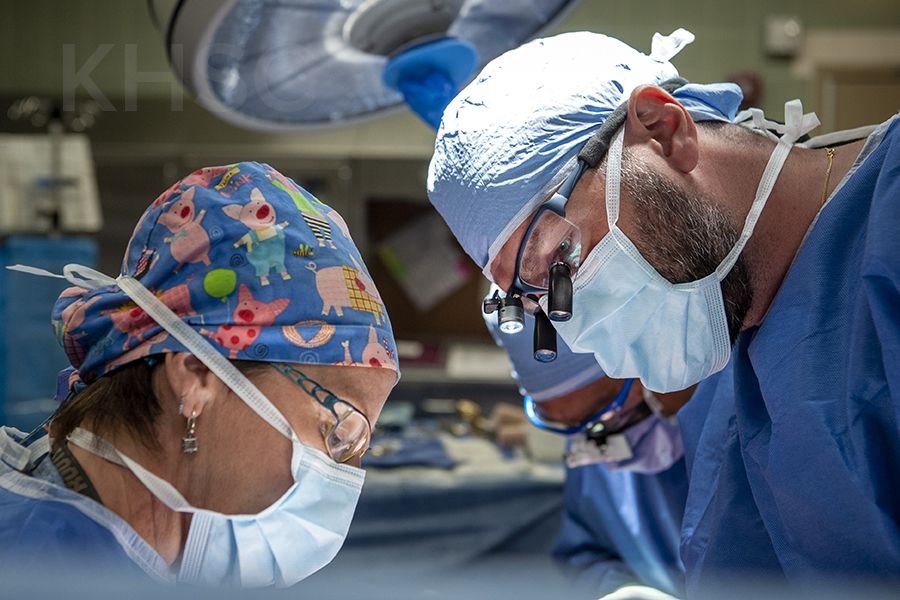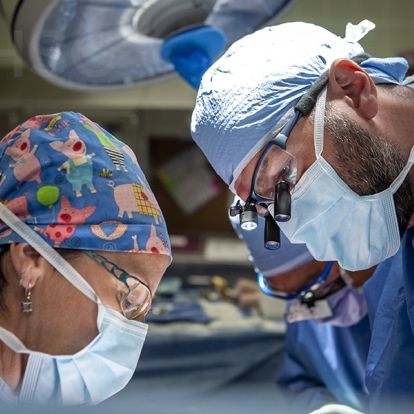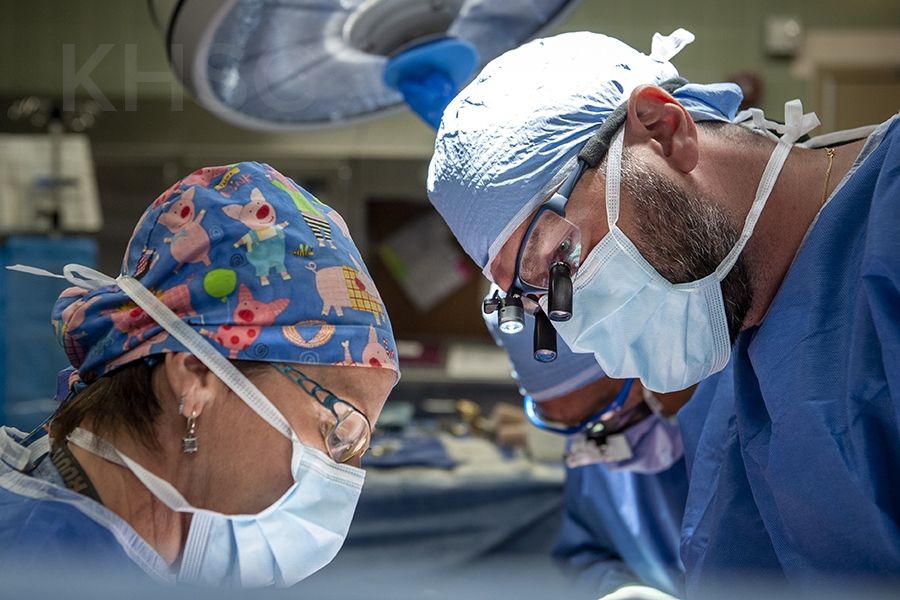Effective immediately masking is required for everyone when present on all inpatient units, in the Emergency Department (ED), the Urgent Care Centre (UCC), and the Children’s Outpatient Centre (COPC).

Kingston Health Sciences Centre (KHSC) has become the first in North America to offer a unique surgical procedure to treat patients with a complex aortic disease known as an aortic dissection, a life-threatening condition in which the largest artery in the body splits or breaks.
Repairing the aorta, especially at its upper arch – the curved segment where the neck vessels branch off to provide blood to the brain -- is challenging and risky, and can be further complicated because the damage can extend further down, into the chest portion of the artery.
The KHSC team, led by cardiac surgeons Dr. Gianluigi Bisleri and Dr. Darrin Payne, recently completed a complex reconstruction of the aortic arch and repair of the descending aorta using new vascular technology, successfully correcting two serious problems in one surgery, known as a ‘frozen elephant trunk’ procedure.
“Treating the complete aortic arch is not very common given that it is one of the most complex surgeries,” says Dr. Bisleri, who is also a Clinician-Scientist and Associate Professor of Surgery at Queen’s University “The multi-branch vascular graft that we used (Lupiae graft) allowed us to reconstruct the arch and its neck vessels in a more anatomical fashion. At the same time we also deployed a new, hybrid stent into the aorta (Evita Open System). This enabled us to perform extensive repairs, using improved devices, in a novel way, for the first time in Canada, the United States or Mexico.”
In the past, patients would have required two separate, invasive surgeries, completed about two months apart, requiring opening the chest in the front and on the left side, leading to extremely invasive procedures and a slower return to routine activities for patients.
“Those surgeries also required a significant cooling of the patient’s body temperature to almost 18C, which could have potential negative impacts on the body,” says Dr. Bisleri. “This new approach instead ensures blood flow in the most important organs at all times, allowing more normal temperature to be maintained during surgery. It is a considerable improvement in the surgical approach that can make this complex treatment more feasible, while minimizing the complications and reducing the patient’s recovery time.”
“This innovative surgical option allows to expand the treatment of a very complex population, especially for those patients who suffered an aortic dissection” says Dr. Bisleri.
Dr. Bisleri and a team of heart specialists at KHSC will also be raising awareness about this procedure on September 19, when they will hold Canada’s first Aortic Dissection Awareness Day, part of an international, patient-led initiative to educate survivors and the public about this serious condition and the new opportunities for addressing it.
“We’re extremely proud to bring this specialized level of care to the people of Southeastern Ontario and our province in general,” Dr. Bisleri says. “This is another example of the excellent cardiac program we have in Kingston and how KHSC and Queen’s University have been supporting the adoption of innovations in areas of unmet needs such as complex aortic arch disease, integrating new technologies and techniques to benefit the patients in our area and beyond.”





